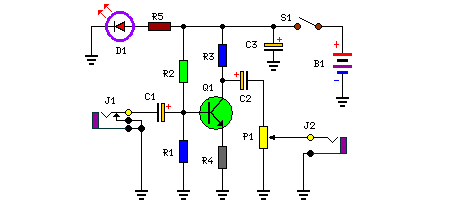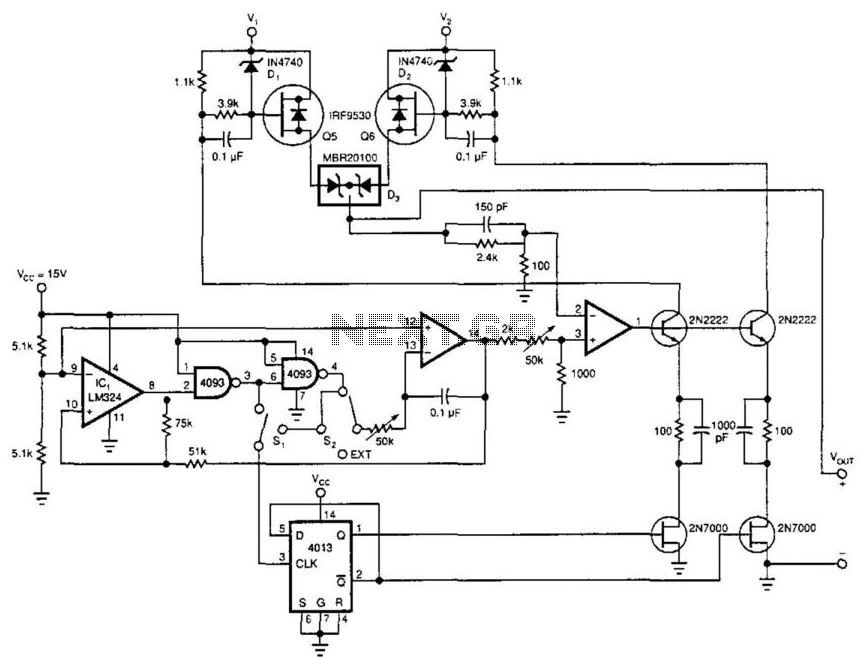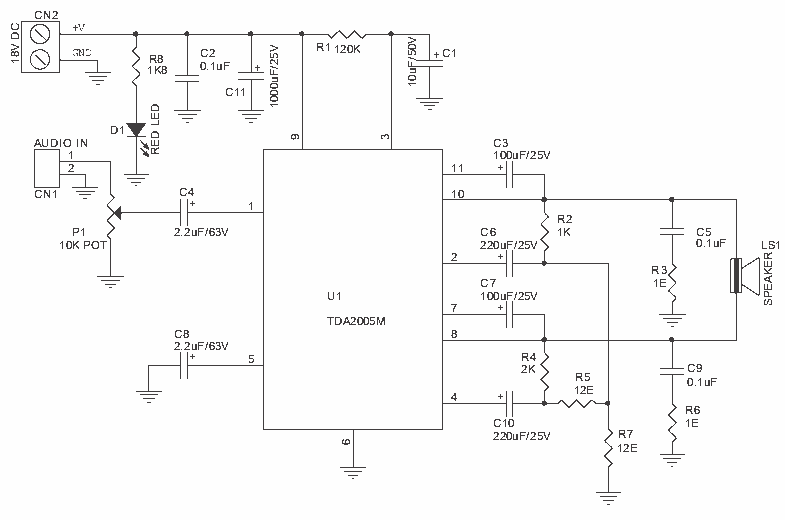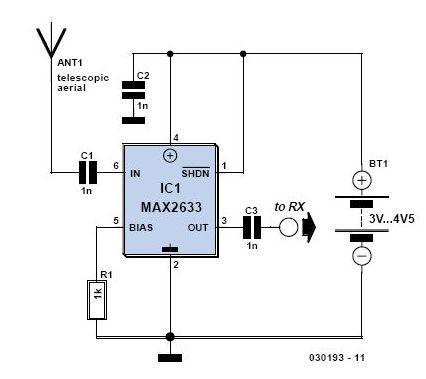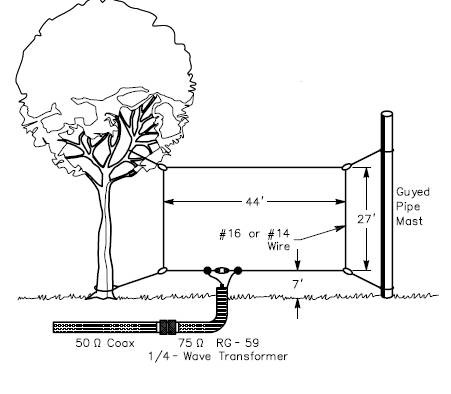
TV antenna booster
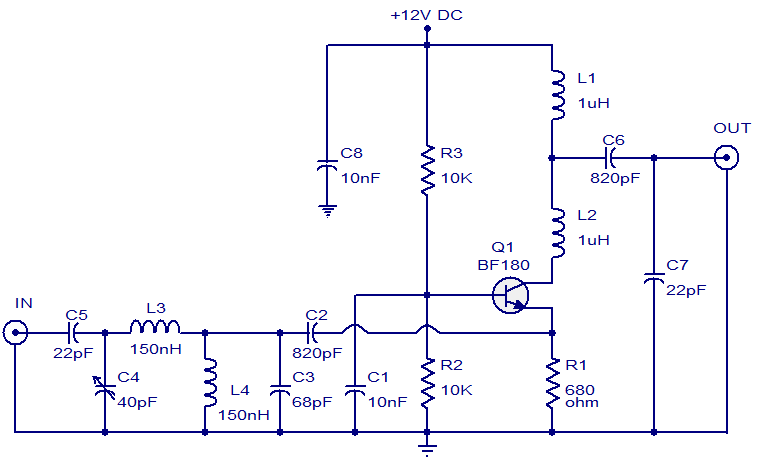
The circuit depicted is a TV antenna booster utilizing the BF180 transistor. It functions within the UHF band and provides a gain of 15 dB. Capacitors C2, C3, C4, and C5, along with inductors L3 and L4, create a UHF band-pass filter. The input signal is directed to the emitter of Q1 via this filter. Resistors R2 and R3 are used to bias the transistor Q1, which is configured in a common base arrangement.
The TV antenna booster circuit employs the BF180 transistor, known for its high-frequency performance, making it suitable for UHF applications. The common base configuration is advantageous in this design as it offers a low input impedance, which is ideal for matching the high-frequency signals typically received by UHF antennas.
The band-pass filter formed by capacitors C2, C3, C4, C5, and inductors L3 and L4 is critical in this circuit. It selectively allows the desired UHF signals to pass while attenuating unwanted frequencies, thus enhancing the overall performance of the antenna system. The gain of 15 dB indicates that the circuit can significantly amplify weak signals, improving the quality of received television broadcasts.
Biasing resistors R2 and R3 ensure that the transistor operates within its optimal range. Proper biasing is essential for maintaining the linearity of the amplifier and preventing distortion of the amplified signal. The circuit's design must also consider power supply decoupling to minimize noise and ensure stable operation under varying load conditions.
Overall, this TV antenna booster circuit is an effective solution for enhancing UHF signal reception, making it a valuable addition to any television setup in areas with weak signal coverage.The circuit shown here is of a TV antenna booster based on the transistor BF180. The circuit operates in the UHF band and has a gain of 15dB. Capacitors C2, C3 C4, C5 and inductors L3, L4 forms a UHF band pass filter. The input signal is fed to the emitter of Q1 through this filter. Resistor R2 and R3 biases the transistor Q1 which is wired in the common base configuration. 🔗 External reference
The TV antenna booster circuit employs the BF180 transistor, known for its high-frequency performance, making it suitable for UHF applications. The common base configuration is advantageous in this design as it offers a low input impedance, which is ideal for matching the high-frequency signals typically received by UHF antennas.
The band-pass filter formed by capacitors C2, C3, C4, C5, and inductors L3 and L4 is critical in this circuit. It selectively allows the desired UHF signals to pass while attenuating unwanted frequencies, thus enhancing the overall performance of the antenna system. The gain of 15 dB indicates that the circuit can significantly amplify weak signals, improving the quality of received television broadcasts.
Biasing resistors R2 and R3 ensure that the transistor operates within its optimal range. Proper biasing is essential for maintaining the linearity of the amplifier and preventing distortion of the amplified signal. The circuit's design must also consider power supply decoupling to minimize noise and ensure stable operation under varying load conditions.
Overall, this TV antenna booster circuit is an effective solution for enhancing UHF signal reception, making it a valuable addition to any television setup in areas with weak signal coverage.The circuit shown here is of a TV antenna booster based on the transistor BF180. The circuit operates in the UHF band and has a gain of 15dB. Capacitors C2, C3 C4, C5 and inductors L3, L4 forms a UHF band pass filter. The input signal is fed to the emitter of Q1 through this filter. Resistor R2 and R3 biases the transistor Q1 which is wired in the common base configuration. 🔗 External reference
